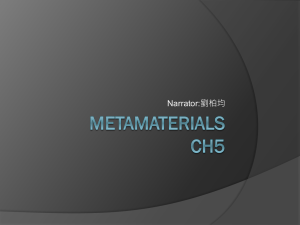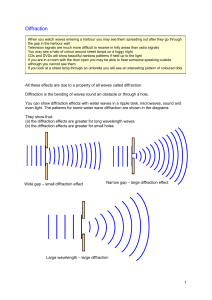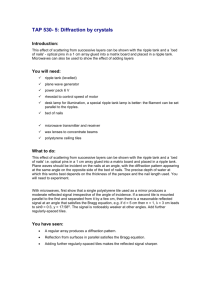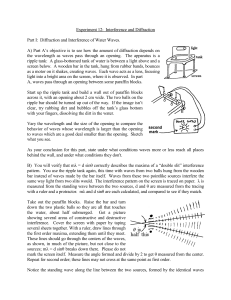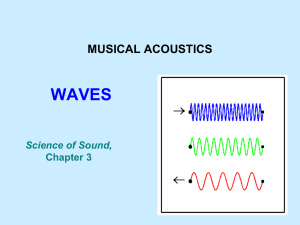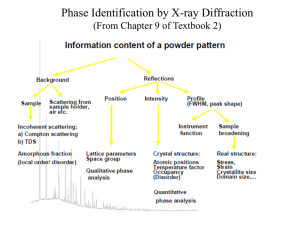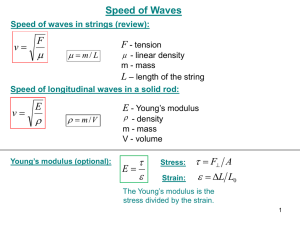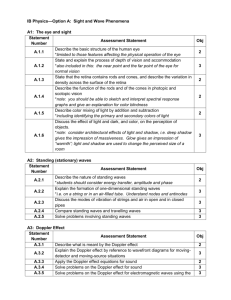Water Wave Diffraction Experiment: Ripple Tank Instructions
advertisement
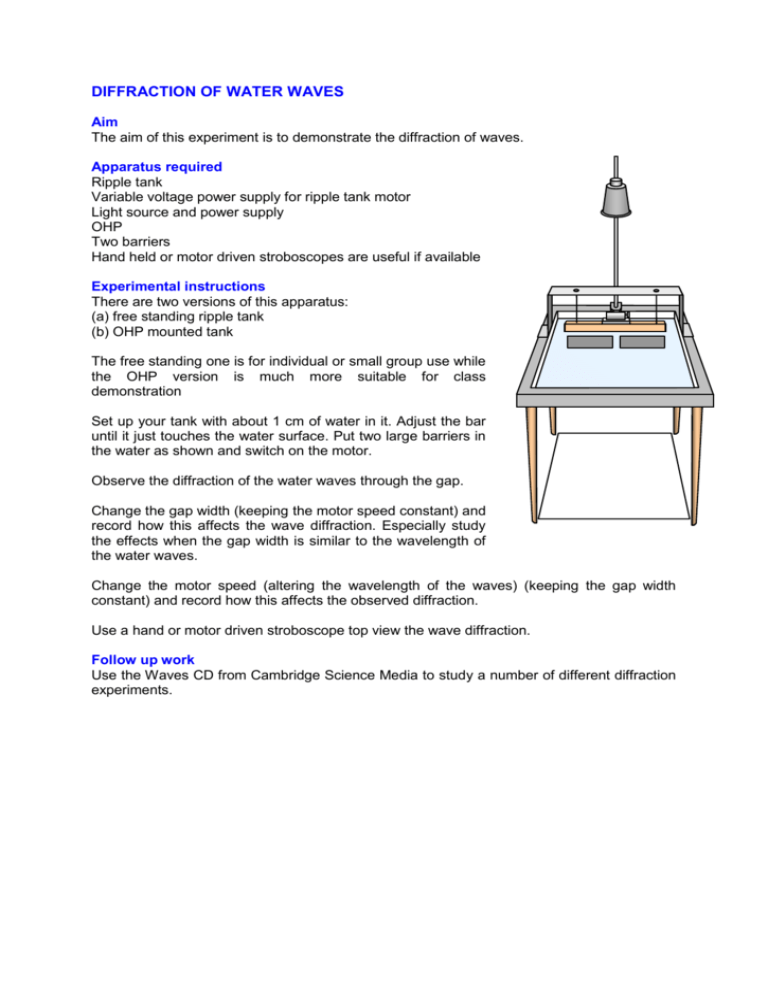
DIFFRACTION OF WATER WAVES Aim The aim of this experiment is to demonstrate the diffraction of waves. Apparatus required Ripple tank Variable voltage power supply for ripple tank motor Light source and power supply OHP Two barriers Hand held or motor driven stroboscopes are useful if available Experimental instructions There are two versions of this apparatus: (a) free standing ripple tank (b) OHP mounted tank The free standing one is for individual or small group use while the OHP version is much more suitable for class demonstration Set up your tank with about 1 cm of water in it. Adjust the bar until it just touches the water surface. Put two large barriers in the water as shown and switch on the motor. Observe the diffraction of the water waves through the gap. Change the gap width (keeping the motor speed constant) and record how this affects the wave diffraction. Especially study the effects when the gap width is similar to the wavelength of the water waves. Change the motor speed (altering the wavelength of the waves) (keeping the gap width constant) and record how this affects the observed diffraction. Use a hand or motor driven stroboscope top view the wave diffraction. Follow up work Use the Waves CD from Cambridge Science Media to study a number of different diffraction experiments.

